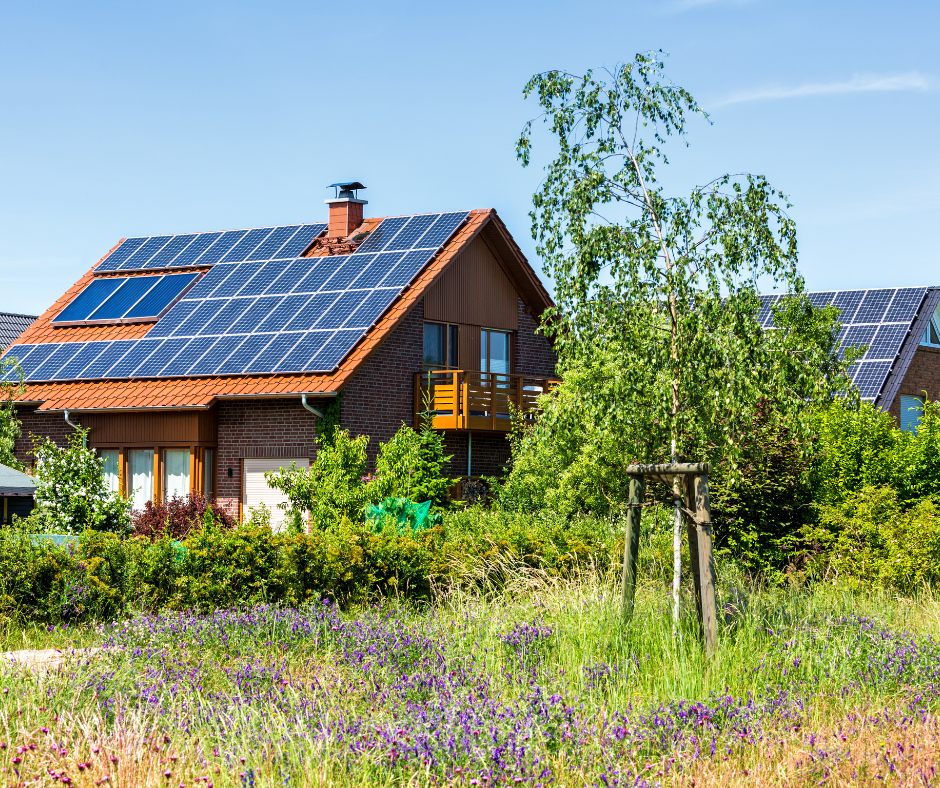Rural Communities and Renewable Energy in Southwest Germany
June 5, 2023
After a long day of exploring the rural German countryside, there’s much to take away apart from how freaking cute 1-week old cows are. Our group’s thoughts about rural communities went from farming and conservatism to sustainable innovation and the energy transition. We witnessed integrated, sustainable power-generating infrastructure, which through co-ops and government subsidies, became obvious additions to provide economic value, energy independence, and future-proof development to any rural village. While Stephanie provided an insightful overview of our day and how eye-opening it was for all of us, I will consider how what we learned applies back home.
While the rest of our Freiburg programming focuses on sustainable development and planning in urban areas, rural communities are just as important. A huge portion of the United States is rural, constituting 20% of the population and 97% of the land mass. The agriculture industry combined with larger per-individual transportation and energy consumption emissions when compared to urban dwellers, constitutes an expansive carbon footprint. In terms of climate change, rural villages need to reduce the effects of livestock emissions while electrifying and producing their own clean energy. The German villages we saw were well on their way to addressing these problems. Throughout the day, we witnessed a plethora of rooftop solar, multiple hydroelectric plants, windmills, and even a sophisticated biogas plant responsible for 1 million kWh of energy production a year. The collective efforts of cooperatives and government subsidies made most of these investments possible, producing enough energy for rural villages to export to the grid. For instance, our tour guide Erhart was an investor in multiple windmills and a hydro plant. Through his investment in a mid-size windmill, Erhart shares 6% of the windmill’s profit totaling around $1 million euros a year, along with ~140 other investors. Along with solar and biogas, such projects are a no-brainer for rural inhabitants who benefit from the profits and reliable, independent energy provided by renewable power supplies.
At the end of the day, Erhart shared an important context to what originally stimulated such interest and the early widespread adoption of renewable technologies in the German countryside. Germany’s anti-nuclear movement was centered in these Rhine-adjacent communities, driving cities and farmers alike to prove the viability of renewables through development. This sentiment remains in the communities surrounding Freiburg, motivating individuals to take the initiative in investing in and supporting sustainable energy. However, if we hope to translate such development to the US, we must recognize how different the attitudes and sentiments of rural Americans are. Ultimately, the technology and incentive is there, but the US is still missing ample support and motivation.
In North Carolina, there are currently 26 electric cooperatives tasked with reaching net-zero carbon emissions by 2050 by investing in energy resources, efficiency, and electrification. Along with existing government subsidies, these organizations continue to provide necessary funding and aid to green projects throughout the state. However, taken in context with Germany’s nearly 900 cooperatives, current support of rural renewable energy isn’t nearly ambitious enough to make our country a leader in the green transition. Therefore, sustainability advocates must educate rural communities on the incentives and vast benefits of new energy projects. Hopefully, with heightened motivation and increased subsidies through the Inflation Reduction Act and future legislation, more rural communities will experience the energy security and profit of renewable infrastructure while society benefits from drastically reduced GHG emissions.
About the Author
Kyle Daniels, ’26, Environmental Science and Economics, Connect on LinkedIn
